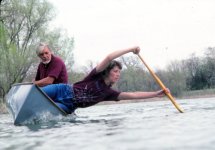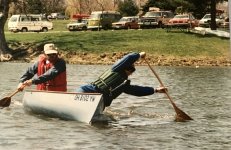Mike Galt and Deb Welbes show how do it with style in the late 1980's or 1990's in one of Galt's Lotus Egret canoes. Heel the canoe to the rail to get on the side rocker, while the bow does a hanging draw (aka Duffek) and the stern does sweep strokes. The bow can then pull in the draw to enhance the turn. Can you do this?



